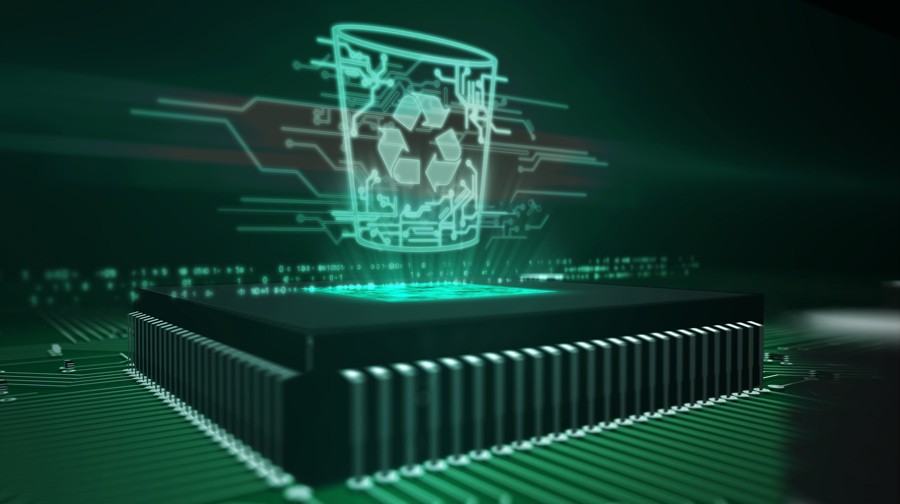Let’s talk trash. No, not that kind of trash. Rather, the huge amount of garbage that the U.S. produces. For example, Americans generate about 4.9 pounds of trash per person, per day. Similarly, according to the EPA, the total amount of municipal solid waste generated in 2018, the latest year reported, was over 290 million tons.
About half of that goes into landfills, including over 30 million tons of food, 27 million tons of plastic, over 18 million tons of paper and paperboard, and much more. Also, during the COVID-19 pandemic, trash was produced at record levels, straining trash collection companies and causing issues with many landfills that are already challenged for space.
Why is Technology Essential in Waste Management?
Much has been written about disruption in business, but a continuing adoption of disruption in waste management technology is critical for the environmental health of mother earth. Technology can provide much better, more efficient, and more environmentally sound ways to gather sort, dispose of, and use waste.
Then waste management becomes more effective and sustainable, and protecting the environment in the process. Doing waste collection and dumping it all in landfills as it has been done historically looks to be unworkable the near and long term.
Important Perspective on Waste Management
The stated objectives of waste management are to reduce and eliminate any adverse impacts of waste materials on human life and the environment and to support economic development. Additionally, this must be done to control or prevent waste buildup. The functional elements of waste management include waste collection, waste transport and transfer, waste processing and recovery, and waste disposal.
New Innovations in Garbage & Waste Management Technology
Many technology innovations are being applied to assist in achieving more effective and more environmentally beneficial ways of collecting and processing waste. These include:
1. Smart waste bins.
Several companies now produce “smart” waste containers that can detect trash levels and alert users when they are full. This can help people better manage their disposal habits and even optimize trash pickup schedules, like alerting trash collection companies when it is time for another pickup. Some of these “smart” containers can even provide information on how to properly dispose of certain items.
2. Fleet management technology.
Traditional trash pickup and collection systems can benefit from logistics management technology which uses a network of sensors and GPS data to optimize trash collection routes, thus helping drivers adjust their routes to save time and reduce emissions. It is estimated that better planned routes could reduce transportation costs up to 40 percent. In addition, electric garbage trucks can make waste collection quieter, more cost efficient, and benefit the environment at the same time.
3. Pneumatic waste collection.
Instead of the traditional truck pickup process, some areas have created a system powered by air compressors that uses vacuum suction to empty garbage bins through an underground network of pneumatic tubes. This process reduces greenhouse gasses, and speeds waste collection, thereby giving waste management plants more time to sort trash.
4. Trash collecting robots.
As human transportation innovations have continued with robotically operated driverless cars, there is also interest in the possibility of robotic trash collection. For instance, robots would assist in the heavy lifting and handling aspects of garbage collection.
5. Plasma gasification.
Simply burning waste to eliminate the space occupied by collected trash may help with the surging problems of limited landfill space but that creates greater problems of air and groundwater pollution. A better technological solution is called plasma gasification. Using this type of process, plasma heats waste and converts the waste into usable gasses such as hydrogen, a sustainable fuel source. This process could eliminate a huge amount of CO2 emissions each year.
However, there are other means of turning waste into energy. For example, instead of allowing waste to simply sit in a landfill, new machinery referred-to as “digesters” can transform the waste and the biogas that it produces and turn the waste into energy. That includes such waste types as food, animal waste, and agricultural leftovers.
Also, yet another technology is called thermal conversion. Thermal conversion uses heat and pressure to turn useless waste into things like chemicals, fertilizers, and oils.
6. New ways to recycle precious metals.
Many industries require the use of precious metals including platinum, palladium and iridium. Such industries such as the chemical and automotive industries use these metals as catalysts in their processes. Plasma arc recycling can help recover some of these metals so that they can be reused.
7. Improved recycling approaches.
Many waste management companies have converted their old single-stream recycling where people just dump all their trash into one bin. So today most customers sort green waste, home general waste, and recyclable waste in separate bins. As a result, the recycling process is more efficient and faster.
8. Landfill modernization.
Governmental rules and strong public pressure to improve the environment have influenced landfill operators to modernize garbage dumps. New enhancements include the linking of solar panel systems with geomembranes to facilitate the production of energy. This process subsequently reduces the volume of carbon re-entering the environment.
9. Chemical treatment of plastic.
Chemical recycling of plastic transforms plastic waste into liquid hydrocarbon. The liquid is then a component in the production of new products.
10. Plastics recycling.
Currently, less than 10 percent of plastics that are used are recycled. Companies like PureCycle Technologies have developed processes for recycling plastics in a way that separates out color, odor, and contaminants, thus transforming the plastic material into a virgin-like resin which is the basis of plastic products.
11. Artificial Intelligence (AI) waste sorting.
AI waste sorting corrects improper waste disposal and improve recycling. Moreover, screening technology can sort through items more quickly, accurately, and efficiently than manual screening. Alternatively, other approaches include magnets and advanced disc screens.
Concluding Thoughts
Efficiency. Space. Reduced costs. Better environmental impact. Better use of America’s resources. These are the objectives of improved technology application for waste management.
As a result, all Americans should want more sustainable systems applied to our huge generation of waste. Waste management doesn’t need to be wasteful. Therefore, as consumers and companies adopt advanced technologies, new processes and technology will continue to emerge. Additionally, new tech will continue to have an increasing impact on the nation’s waste management.
More Resources on New Waste Management Technology
Learn more about the latest developments in garbage and waste management technology at the following locations:






Leave A Comment